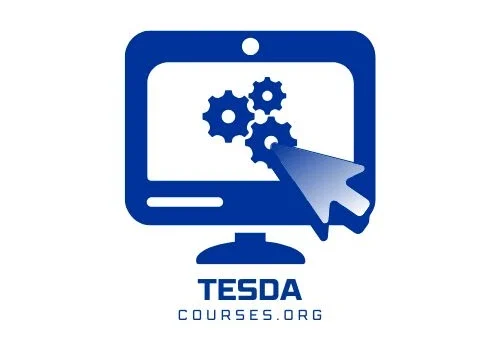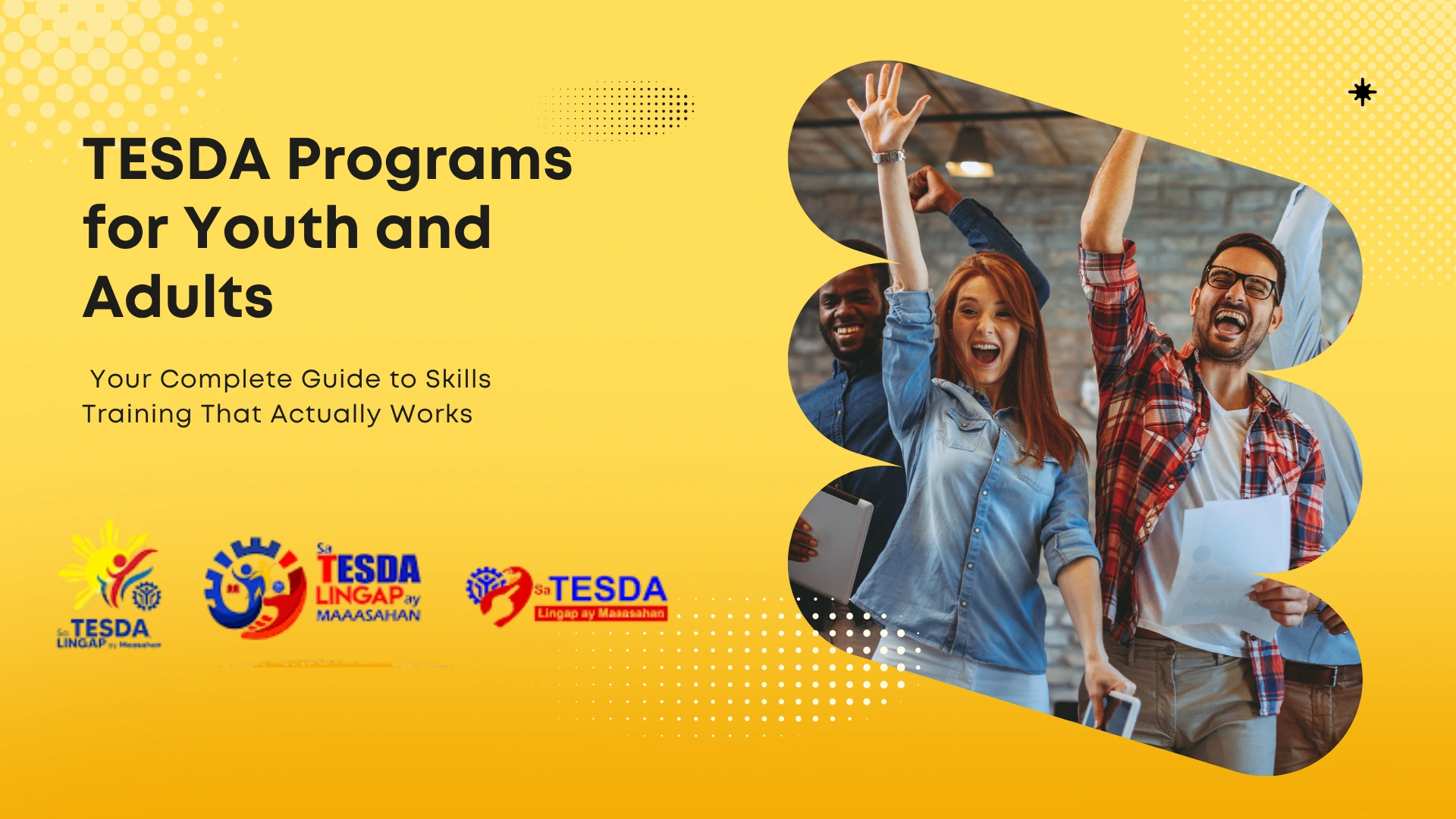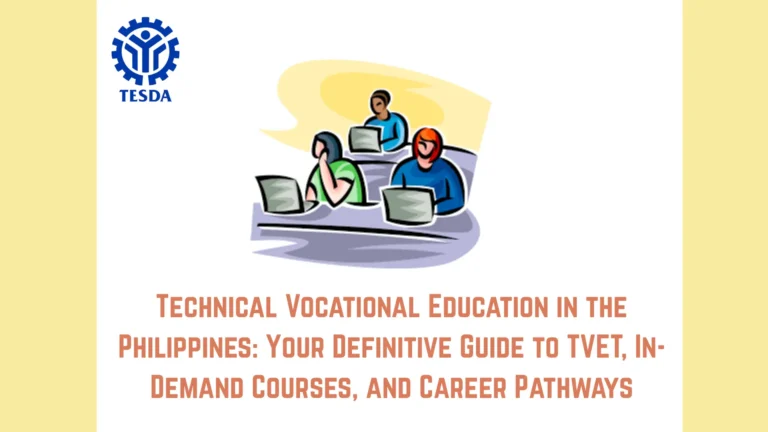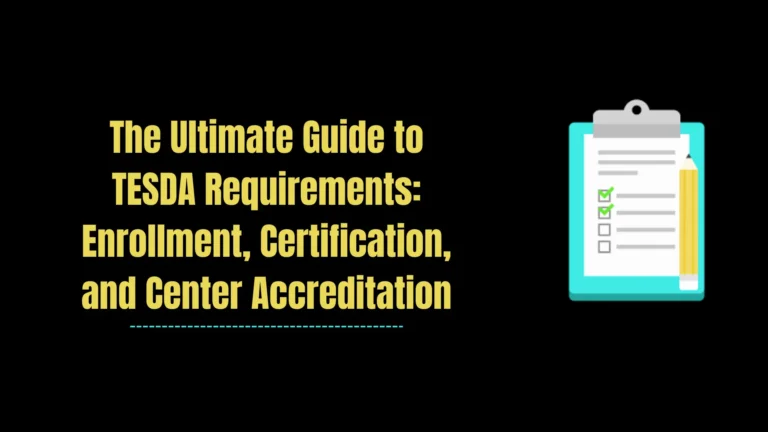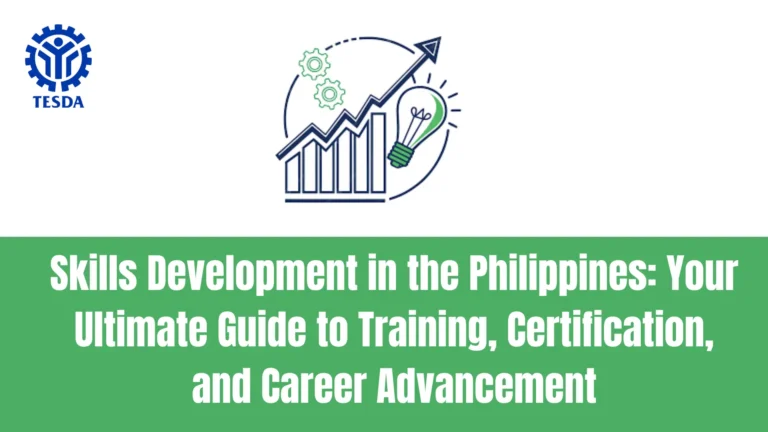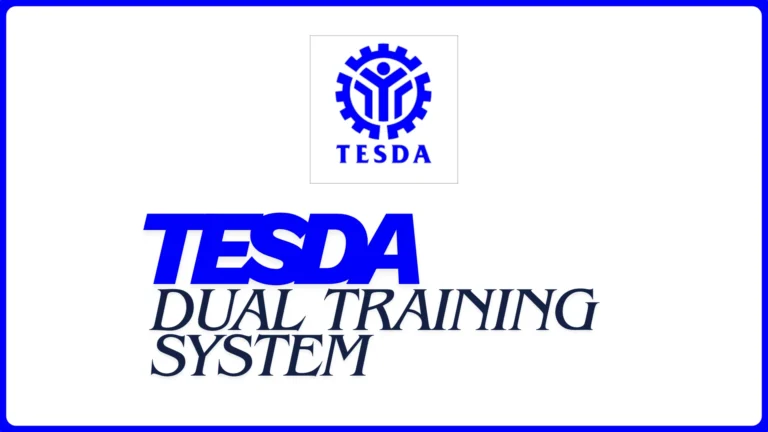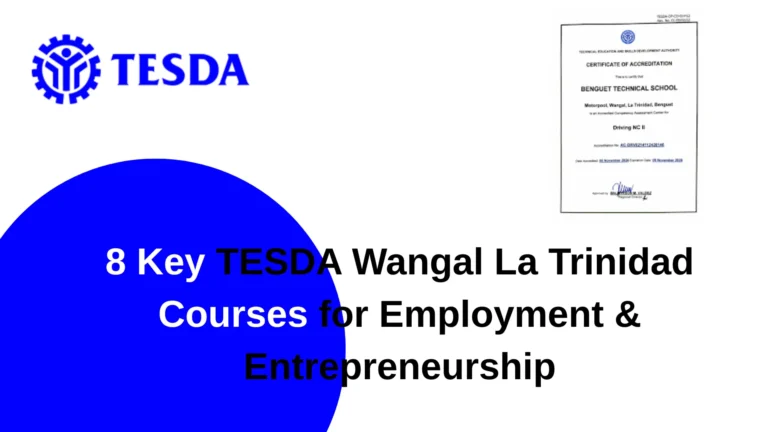TESDA Programs for Youth and Adults: Your Complete Guide to Skills Training That Actually Works
Here’s a truth bomb for you: your age doesn’t define your potential to learn new skills. Whether you’re a fresh-faced 18-year-old trying to figure out life after high school, a 35-year-old contemplating a career pivot, or a 60-year-old refusing to let retirement define you—TESDA programs for youth and adults are designed exactly for people like you.
I’ll be honest. When I first heard about TESDA’s reach across different age groups, I was skeptical. How can one system effectively serve everyone from dropouts to doctors wanting to retool? But here’s the thing: TESDA has spent decades perfecting the art of accessible, practical education. They’ve figured out that skills training isn’t a one-size-fits-all game, and they’ve built programs that meet people exactly where they are.
So buckle up. Whether you’re an out-of-school youth looking for direction, an adult seeking employment skills, a returning OFW planning your next chapter, or even a senior citizen embracing active aging—this guide is your roadmap to TESDA’s surprisingly comprehensive world.
Why TESDA Programs for Youth and Adults Are Game-Changers
Let’s start with the big picture. The Philippines has a unique demographic challenge: millions of young people entering the workforce annually, plus adults displaced by economic shifts, technology, or life circumstances. Traditional four-year degrees? They’re expensive, time-consuming, and increasingly disconnected from what employers actually need.
Enter TESDA skills training for adults and youth programs. They’re the pragmatic solution to a practical problem.
Think about it this way: while your college-bound friends are still studying theory in year three, someone taking TESDA courses for youth could already be certified, employed, and earning. By the time those college friends graduate, the TESDA grad might be supervising them. That’s not shade—that’s just the reality of practical skills training done right.
The Youth Angle: TESDA Courses for Youth That Lead Somewhere Real
Let me paint you a picture of the typical Filipino youth dilemma. You’re 18, fresh out of high school (or maybe you didn’t finish), and everyone’s asking: “College or work?” But what if there’s a third option that’s better than both?
TESDA Youth Skills Development: What Makes It Different
TESDA courses for youth aren’t watered-down versions of adult programs. They’re specifically designed considering that young people have:
- More time for intensive training
- Higher adaptability to new technologies
- Less financial independence (hence more free programs)
- Career flexibility (no need to unlearn old work habits)
- Energy for hands-on, physical learning
Top TESDA Courses for Youth in 2025
Let me break down what’s actually working for young people right now:
| Course | Duration | Youth Appeal | Starting Salary Range | Why It’s Hot |
|---|---|---|---|---|
| Web Development | 3-6 months | High—remote work, freelancing | ₱20,000-₱40,000/month | Digital economy boom |
| Bartending NC II | 1 month | High—fast certification, tips | ₱15,000-₱25,000 + tips | Tourism recovery |
| Animation NC II | 4-6 months | Very High—creative industry | ₱25,000-₱50,000/month | Global outsourcing demand |
| Motorcycle/Small Engine Servicing | 3 months | Moderate—entrepreneurship potential | ₱18,000-₱30,000/month | Growing motorcycle market |
| Beauty Care NC II | 2-3 months | High—low startup capital | ₱15,000-₱40,000/month | Social media influence |
| Cookery NC II | 3 months | High—always in demand | ₱15,000-₱28,000/month | Food industry expansion |
| Contact Center Services | 2 months | Very High—massive hiring | ₱18,000-₱25,000/month | BPO industry growth |
| Organic Agriculture | 3-4 months | Growing—sustainability trend | ₱20,000-₱35,000/month | Farm-to-table movement |
Real talk: The tech-related courses (web dev, animation, IT) offer the highest income potential, but they require dedication. Service-oriented courses (bartending, beauty care, cookery) get you earning fastest. Choose based on your personality, not just the paycheck.
TESDA Programs for Out-of-School Youth: No Judgment, Just Opportunities
Here’s something I love about TESDA: they don’t care why you left school. Life happens. Maybe you needed to help your family, maybe traditional education wasn’t your thing, maybe circumstances just didn’t align. TESDA programs for out-of-school youth focus on one question only: “What do you want to learn?”
Special provisions for OSY (Out-of-School Youth):
- Lower educational requirements (some courses need only Grade 10 completion)
- Priority scholarship slots through TWSP
- Flexible schedules (weekend and evening classes)
- Skills assessment instead of academic tests
- Livelihood integration programs (learn AND earn)
I’ve seen 19-year-olds who dropped out in Grade 11 become certified welders earning ₱30,000 monthly within six months. That’s not luck—that’s TESDA understanding that academic performance doesn’t equal capability.
TESDA Courses for Abroad: The Ultimate Guide to In-Demand NC II & NC III Certifications
TESDA Free Courses for Youth: Yes, Actually Free
“Free” in the Philippines usually means “hidden fees will surprise you later.” Not with TESDA free courses for youth. When they say free, they genuinely mean it.
What “free” includes:
- Zero tuition fees
- Training materials provided
- Assessment and certification covered
- Sometimes meal allowances (₱60-₱80 daily)
- Occasionally transportation stipends
Programs offering free training for youth:
- TWSP (Training for Work Scholarship Program) – covers tuition, materials, assessment
- STEP (Special Training for Employment Program) – community-based free training
- PESFA (Private Education Student Financial Assistance) – grants for private TESDA schools
- Company-sponsored programs – corporations funding training for future hires
How to qualify:
- Be 18 years or older (some programs accept 15-17 with parental consent)
- Philippine resident (international students typically ineligible for free programs)
- Pass basic assessment tests
- Show financial need (for scholarship programs)
- Commit to completing the course
Pro tip: Apply early. Free slots fill up faster than a midnight sale on Shopee. Enrollment typically opens January-February for midyear batches, and June-July for second-semester intake.
The Adult Perspective: TESDA Skills Training for Adults Who Mean Business
Now let’s talk about the grown-ups in the room. If you’re reading this as an adult, you probably fall into one of these categories:
- Career shifter looking for new opportunities
- Returning OFW planning domestic reintegration
- Unemployed/underemployed seeking better prospects
- Employed but wanting skill upgrades
- Senior citizen staying active and relevant
Good news: TESDA adult training programs are designed with you in mind.
The Ultimate Guide to TESDA Training Centers, Courses, and Contact Information Nationwide
Why TESDA Skills Training for Adults Works
Adults bring something youth don’t: context. You know what it’s like to work, manage money, deal with real-world pressures. TESDA leverages that.
Adult-focused advantages:
- Evening and weekend classes (because you might have day jobs or family obligations)
- Accelerated programs (condensed schedules for faster completion)
- Prior learning assessment (your work experience might count for credits)
- Industry partnerships (direct employment pipelines)
- Entrepreneurship integration (not just employment—business ownership)
I’ve watched 40-year-olds who never touched a computer become certified in computer systems servicing and start their own repair shops. Age isn’t the barrier—mindset is.
TESDA Employment Skills for Adults: The Direct-to-Work Programs
These aren’t theoretical courses—they’re designed with employment partners already waiting.
High-demand adult programs with job placement:
Healthcare Sector:
- Caregiving NC II (3-6 months) – global demand, domestic and international opportunities
- Massage Therapy NC II (1-2 months) – wellness industry boom
- First Aid and CPR (1 week intensive) – required for many industries
Construction and Trades:
- Electrical Installation and Maintenance (6 months) – construction boom
- Plumbing NC II (3 months) – always needed
- Welding NC I-III (2-6 months) – manufacturing and construction
IT and Digital:
- Computer Systems Servicing NC II (3 months) – repair and maintenance
- Contact Center Services NC II (2 months) – BPO industry
- E-Commerce Management (1 month) – online business explosion
Hospitality and Service:
- Food and Beverage Services NC II (2 months) – tourism recovery
- Housekeeping NC II (1 month) – hotels and facilities
- Front Office Services NC II (2 months) – customer-facing roles
TESDA Courses for Returning OFWs: Coming Home Doesn’t Mean Starting Over
Let’s address the elephant in the room. You spent years abroad—maybe as a domestic helper in Hong Kong, a construction worker in the Middle East, or a nurse in the UK. Now you’re back, and you’re thinking: “What do I do with my life now?”
TESDA skills training for returning OFWs is specifically designed for your unique situation. You’ve got international work experience, savings (hopefully), and global perspective. TESDA helps you translate that into local opportunities.
Popular courses for returning OFWs:
For Domestic Workers:
- Massage Therapy (leverage caregiving experience)
- Beauty Care/Salon Management (personal service skills)
- Bread and Pastry Production (culinary interest)
- Housekeeping Supervision (upgrade to management)
For Construction Workers:
- Heavy Equipment Operation (formalize machinery skills)
- Construction Safety (become a safety officer)
- Tile Setting (specialized, high-paying skill)
- Carpentry (start your own contracting business)
For Healthcare Workers:
- Medical Transcription (use medical knowledge remotely)
- Pharmacy Services (leverage healthcare background)
- Dental Clinic Services (dental assistant certification)
For Seafarers:
- Welding (apply maritime skills onshore)
- Refrigeration and Air Conditioning (technical skills transfer)
- Electrical Installation (maritime electrical experience)
OFW-specific benefits:
- Priority enrollment in some programs
- Recognition of prior learning (work experience counts)
- OWWA funding (Overseas Workers Welfare Administration scholarships)
- Business development training (entrepreneurship integration)
The Ultimate Guide to TESDA Requirements: Enrollment, Certification, and Center Accreditation
Special Populations: TESDA Programs That Leave No One Behind
Here’s where TESDA genuinely impresses me. They’ve created programs for groups often overlooked by mainstream education.
TESDA Skills Courses for Women: Breaking Barriers
TESDA skill courses for women aren’t just “traditional” female-dominated fields. They’re actively pushing women into high-paying technical trades.
Women-focused programs:
- Women in Construction – masonry, electrical, plumbing
- Non-Traditional Livelihood – welding, automotive, HVAC
- Home-Based Enterprise – food production, handicrafts, online business
- Women’s Center Programs – comprehensive training with childcare support
Why this matters: A female welder earns the same as a male welder (₱25,000-₱40,000/month), but there’s less competition. Smart women are seizing these opportunities.
TESDA Skills Training for Persons with Disabilities: Inclusive by Design
The Philippines mandates disability inclusion, and TESDA programs for special needs learners actually deliver on it.
Accessibility features:
- Specialized training centers with ramps, wide doorways, accessible restrooms
- Modified curricula based on disability type
- Assistive technology integration
- Longer training periods if needed
- Job placement support with understanding employers
Courses adapted for PWDs:
- Massage Therapy (popular for visually impaired—exceptional tactile sensitivity)
- Computer Programming (accessible for mobility-impaired)
- Handicraft Production (adaptable to various disabilities)
- Agricultural Production (therapeutic and productive)
- Customer Service (call center roles for mobility-impaired)
TESDA Skills Training for Senior Citizens: Active Aging Done Right
Here’s a beautiful thing: TESDA programs for senior citizens recognize that 60+ doesn’t mean “done learning.”
Senior-friendly courses:
- Organic Agriculture (gentle, rewarding, profitable)
- Massage Therapy (wellness skills, flexible work)
- Handicraft Making (traditional skills, cultural preservation)
- Basic Computer Literacy (digital inclusion)
- Bread and Pastry Production (culinary arts, home business potential)
Senior-specific benefits:
- Slower-paced instruction
- Peer-group training (age-appropriate cohorts)
- No assessment pressure (learning for enrichment, not just certification)
- Flexible attendance policies
- Discounted/Free for seniors (many programs waive fees for 60+)
I know a 67-year-old who took massage therapy training and now operates a thriving wellness business from home. “Retirement” became “reinvention.”
Regional Access: TESDA Skill Courses in Regional Centers
One of TESDA’s strengths is decentralization. You don’t need to go to Manila for quality training.
TESDA skill courses in regional centers offer:
- Lower living costs (₱5,000-₱10,000/month vs ₱15,000-₱25,000 in Metro Manila)
- Smaller class sizes (more instructor attention)
- Community integration (local employers, local opportunities)
- Culturally appropriate training (Indigenous programs, dialect instruction)
- Family-friendly (stay near home, maintain family support)
Strong regional training hubs:
- Northern Luzon: Baguio (agriculture, hospitality), Laoag (agriculture, food processing)
- Central Luzon: Angeles (aviation, hospitality), Tarlac (agriculture, automotive)
- Southern Tagalog: Batangas (maritime, automotive), Cavite (manufacturing, electronics)
- Visayas: Cebu (IT, BPO, maritime), Iloilo (seafaring, agriculture), Bacolod (sugar tech, agriculture)
- Mindanao: Davao (agriculture, food processing), Cagayan de Oro (trade, service), General Santos (maritime, agriculture)
The Entrepreneurship Angle: TESDA Youth and Adult Entrepreneurship
Here’s where things get exciting. TESDA youth and adult entrepreneurship programs don’t just teach you to work for someone—they prepare you to work for yourself.
Livelihood Integration Programs
TESDA youth livelihood program options include:
- StarTUP PH (Startup Training for Unemployed Persons) – business fundamentals + technical skills
- JobStart Philippines – internship + employment + business mentoring
- Kabataang Pinoy – youth entrepreneurship + skills training
- Negosyo Centers Linkage – DTI partnership for business registration and support
How it works:
- Complete technical skills training (e.g., food production)
- Attend entrepreneurship modules (business planning, marketing, finance)
- Develop business plan
- Access microfinance or grants (₱10,000-₱50,000)
- Launch with mentoring support
- Join graduate entrepreneur network
Success stories I’ve witnessed:
- 22-year-old took Bread and Pastry Production, now runs successful bakery (₱80,000/month revenue)
- 35-year-old completed Welding NC II, operates metal fabrication shop (₱150,000/month revenue)
- 28-year-old finished Beauty Care NC II, owns three salon branches (₱200,000/month combined revenue)
The Complete Guide to TESDA Scholarships: How to Get Your Allowance and Train for Free
TESDA Skills for Self-Employment: The Solo Entrepreneur Path
Not interested in hiring employees? TESDA skills for self-employment teach you to be a profitable one-person operation.
Best solo entrepreneurship courses:
- Motorcycle/Small Engine Servicing (home-based repair shop)
- Computer Systems Servicing (mobile repair service)
- Massage Therapy (home service or small clinic)
- Tailoring and Dressmaking (custom orders from home)
- Electronics Products Assembly and Servicing (repair business)
- Photography (events, portraits, commercial)
- Organic Agriculture (farmers market sales)
The Digital Shift: TESDA Online Courses for Adults
COVID changed everything, and TESDA online courses for adults accelerated dramatically.
TESDA Online Program (TOP) offerings:
- Over 70 free online courses
- Self-paced learning
- Video tutorials, modules, assessments
- Certificate upon completion
- Blended learning options (online theory + in-person practical)
Popular online courses:
- Agricultural Crops Production
- Animation
- Beauty Care
- Bread and Pastry Production
- Computer Hardware Servicing
- Contact Center Services
- Cookery
- Dressmaking
- Entrepreneurship
- Food Processing
- Handicraft Making
- Organic Agriculture Production
- Photography
- Tile Setting
- Visual Graphics Design
- Web Development
Real advantage for adults: Study midnight when kids are asleep. Learn during lunch breaks. Pause when life happens. Resume when ready.
Limitation: Hands-on assessments still require in-person attendance at TESDA centers. You can’t become a certified welder purely online (for obvious safety reasons).
Certification That Counts: TESDA Youth and Adult Certification Process
Let’s talk credentials. TESDA certification for youth and adults follows the same rigorous standards regardless of age.
The National Certificate (NC) System
Levels:
- NC I: Basic, entry-level competencies
- NC II: Skilled worker level (most common)
- NC III: Advanced, supervisory competencies
- NC IV: Trainer/expert level
Assessment Process
Theory Exam:
- Written test covering knowledge requirements
- Multiple choice, true/false, matching
- Pass rate: typically 70% or higher required
Practical Demonstration:
- Hands-on performance of skills
- Time-bound tasks
- Quality and safety standards
- Tool/equipment proficiency
Portfolio Assessment (some courses):
- Work samples
- Documentation of projects
- Client testimonials (for entrepreneurship programs)
Adult Learner Advantages
TESDA adult learner certification recognizes prior learning:
- RPL (Recognition of Prior Learning): Work experience may reduce training time
- Challenge Assessment: Prove competency through testing without formal training
- Skill Upgrading: Build on existing certifications progressively
Example: You’ve worked as an informal electrician for 5 years. Through RPL, you might qualify directly for NC II assessment without completing the full training program.
Career Guidance and Support: Beyond Just Training
TESDA career guidance for youth and adults includes:
Pre-Training:
- Career assessment tools
- Skills matching to industries
- Labor market information
- Course selection counseling
During Training:
- Mentoring programs
- Soft skills development
- Industry exposure visits
- Mock interviews
Post-Training:
- PhilJobNet linkage (job matching platform)
- Employer job fairs (direct recruitment)
- Alumni networks (peer support and opportunities)
- Continuing education pathways (ladderized programs to degrees)
Special Focus: Indigenous Populations and Disadvantaged Groups
TESDA Skills for Indigenous Populations
TESDA programs for indigenous communities respect cultural context while providing economic opportunities.
IP-sensitive approaches:
- Training delivered in indigenous territories
- Culturally appropriate courses (traditional weaving, indigenous agriculture)
- Indigenous languages as medium of instruction (when possible)
- Integration of indigenous knowledge systems
- Community-based assessment
Programs:
- Indigenous Peoples Skills Training
- Indigenous Products Development
- Cultural Heritage Preservation Skills
- Sustainable Agriculture (indigenous methods)
TESDA Skills Development for Dropouts
No shame, no judgment. TESDA programs for dropouts focus purely on capability.
Dropout-friendly features:
- Alternative Learning System (ALS) integration – get equivalent education while training
- Lower entry requirements – focus on aptitude, not academic records
- Flexible schedules – work while learning
- Peer support groups – learn with people who understand your journey
- Success coaching – addressing barriers to completion
Making Your Choice: Framework for Youth vs. Adult Decisions
If You’re Youth (15-24)
Consider:
- ✅ Future demand: Choose skills that won’t be automated
- ✅ Growth potential: Pick courses with advancement pathways
- ✅ International portability: Skills valuable abroad
- ✅ Entrepreneurship potential: Can you build a business from this?
- ✅ Personal interest: You’ll be doing this for years
Avoid:
- ❌ Following friends into unsuitable courses
- ❌ Chasing “easy” certifications without job markets
- ❌ Ignoring your natural aptitudes
- ❌ Thinking vocational skills are “less than” college
If You’re Adult (25+)
Consider:
- ✅ Immediate employability: Can you start earning quickly?
- ✅ Transferable skills: What from your experience applies?
- ✅ Market gaps: Where’s demand exceeding supply?
- ✅ Lifestyle fit: Will work schedule fit family obligations?
- ✅ ROI timeline: How quickly do you need income?
Avoid:
- ❌ Thinking you’re “too old” (you’re not)
- ❌ Ignoring technology (it’s unavoidable now)
- ❌ Choosing purely based on past experience
- ❌ Underestimating your learning capacity
Financial Reality: Costs and Funding Options
Let’s talk money because it matters.
Program Costs by Category
Free/Scholarship Programs:
- TWSP (Training for Work Scholarship Program) – covers everything
- STEP (Special Training for Employment Program) – community-based free training
- Government-funded programs – zero out-of-pocket
Low-Cost Programs (₱3,000-₱10,000):
- TESDA Technology Institutes
- Community colleges
- LGU-sponsored training
Moderate-Cost Programs (₱10,000-₱30,000):
- Private TESDA-accredited centers
- Specialized technical schools
- Short-duration programs
Premium Programs (₱30,000-₱100,000+):
- Maritime programs (complex, long-duration)
- Aviation-related courses
- Advanced technical certifications
The Ultimate Guide to TESDA Free Courses Online: Certificates, Allowances, and How to Enroll ?
Funding Sources
For Youth:
- TWSP scholarships
- PESFA (Private Education Student Financial Assistance)
- Company-sponsored programs (future employment commitment)
- LGU scholarships
- Congressional/Senatorial scholarships
For Adults:
- OWWA funding (returning OFWs)
- DOLE programs (displaced workers)
- Self-financing (payment plans available)
- Employer-sponsored upskilling
- Cooperative education programs
For Special Groups:
- PWD-specific scholarships
- Senior citizen fee waivers
- Indigenous peoples programs
- Women in non-traditional livelihoods funding
Success Stories: Real People, Real Results
Let me share some stories that’ll give you perspective:
Maria, 19, Out-of-School Youth Dropped out Grade 11, completed Cookery NC II through TWSP. Now works at a resort in Palawan earning ₱22,000/month + tips + accommodation. Plans to take Bread and Pastry Production next year.
Roberto, 38, Returning OFW Construction worker in Saudi for 12 years, took Heavy Equipment Operation upon return. Now operates backhoes and bulldozers for contractors at ₱2,500/day rate (₱65,000/month when working regularly).
Linda, 55, Career Shifter Corporate admin assistant for 20 years, took early retirement. Completed Massage Therapy NC II, now runs wellness center from home. Earns ₱35,000-₱50,000 monthly, works own hours, loves the flexibility.
Jerome, 23, Tech Self-Starter Completed high school but couldn’t afford college. Took Web Development through TESDA Online. Now freelances internationally earning $800-$1,200 monthly (₱45,000-₱65,000). Works from provincial hometown.
Ate Nena, 67, Senior Entrepreneur Widow, took Bread and Pastry Production. Supplies baked goods to local cafes and schools. Earns ₱15,000-₱20,000 monthly, says it keeps her “young and useful.”
Your Action Plan: Step-by-Step Implementation
Ready to actually do this? Here’s your roadmap:
Month 1: Research and Decision
Week 1-2:
- Take TESDA’s online career assessment
- Research courses matching your interests and situation
- Check labor market information (which skills are hiring)
- Calculate realistic budget and timeline
Week 3-4:
- Visit 2-3 training centers (physical or virtual tours)
- Talk to graduates if possible
- Compare schedules, fees, facilities
- Verify accreditation on TESDA website
Month 2: Application and Preparation
Week 1-2:
- Gather required documents
- Submit applications (apply to multiple programs)
- Apply for scholarships if eligible
- Prepare financially (if self-funding)
Week 3-4:
- Complete entrance assessments
- Attend orientation sessions
- Purchase required materials/uniforms
- Arrange schedule/childcare/transportation
Months 3-6+: Training Period
- Attend consistently (attendance matters for certification)
- Participate actively in practical sessions
- Network with instructors and classmates
- Document your learning (portfolio building)
- Connect with industry through training center
Certification Phase
- Register for competency assessment
- Review all modules systematically
- Practice practical skills until confident
- Take assessment seriously (one shot usually)
- Celebrate when you pass!
Post-Certification
- Register with PhilJobNet
- Update LinkedIn/resume with new certification
- Apply to jobs or start business immediately
- Join alumni associations
- Consider advanced certifications or specializations
Common Mistakes to Avoid
I’ve seen people sabotage their own success. Don’t be that person.
Mistake 1: Choosing Based on Others’ Expectations Your tita wants you to be a nurse, but you hate blood? Don’t take caregiving just to please her. Your skills, your life, your choice.
Mistake 2: Underestimating Commitment Required “It’s only 3 months” doesn’t mean “easy 3 months.” Skills training is intensive. Budget time, energy, and focus.
Mistake 3: Skipping the Certification Assessment You completed training? Great. But without that National Certificate, employers won’t care. Take the assessment.
Mistake 4: Ignoring Soft Skills You’re a brilliant welder but can’t communicate with clients? Learn basic business communication, customer service, professionalism. Technical skills alone aren’t enough.
Mistake 5: Stopping at One Certification The market evolves. Your first certification opens doors. Your second and third certifications build careers. Keep learning.
Mistake 6: Not Networking Your classmates are your future referrals, business partners, job leads. Build relationships. Stay connected.
The International Student Perspective
For international readers considering the Philippines for TESDA programs for youth and adults, here’s what you need to know:
Advantages:
- Cost: A fraction of Western vocational training costs
- English instruction: Most programs taught in English
- International recognition: TESDA certifications recognized in many countries
- Cultural experience: Immersive Southeast Asian experience
- Tropical lifestyle: Year-round training comfort
Considerations:
- Visa requirements: Student visa needed for programs over 60 days
- Scholarship limitations: Most free programs for Filipino citizens only
- Credential recognition: Verify if your home country accepts TESDA certifications
- Living costs: Budget ₱15,000-₱25,000/month in cities
- Language barriers: While instruction is English, daily life might involve Filipino
Best courses for international students:
- Maritime programs (internationally recognized)
- IT and web development (universal skills)
- Culinary arts (transferable globally)
- Hospitality management (tourism industry standard)
- Massage therapy (wellness global demand)
Final Thoughts: Your Skills Are Your Security
Look, I’m going to level with you. We live in uncertain times. Jobs disappear, industries collapse, technology disrupts everything. A college degree used to guarantee security—now it just guarantees debt.
But you know what’s bulletproof? Skills.
Real, practical, in-demand skills that people need and companies hire for. Skills you can take anywhere, apply immediately, build businesses from, teach others, and constantly upgrade.
TESDA programs for youth and adults aren’t perfect. You’ll encounter bureaucracy, outdated equipment sometimes, and instructors ranging from brilliant to barely adequate. But the core promise is solid: accessible, practical skills training that genuinely leads to employment or entrepreneurship.
Whether you’re 18 or 80, whether you finished high school or dropped out in Grade 8, whether you’re Filipino or foreign, able-bodied or living with disabilities—TESDA has carved out space for you.
The question isn’t whether TESDA can deliver. Millions of graduates prove it can.
The question is: Are you ready to invest a few months learning something that could change your economic reality?
Your Move: Let’s Make This Happen
Here’s your homework:
Today: Visit www.tesda.gov.ph and browse courses. Just look. See what speaks to you.
This Week: Take the career assessment. It’s free, online, and genuinely helpful.
This Month: Visit one training center. Ask questions. See facilities. Talk to students.
Within 3 Months: Enroll. Just do it.
Because here’s the truth: a year from now, you’ll wish you’d started today. So start today.
Drop a comment below and tell me: Which TESDA program are you considering? What’s holding you back? Let’s figure this out together.
And if you found this helpful, share it with that friend who’s been stuck in career limbo. Sometimes people just need permission to try something different.
Your skills journey starts now. Make it count.
Want more insights? Follow for practical guides on education, career development, and making smart life choices in the Philippines. Because information is power, but skills pay the bills.
